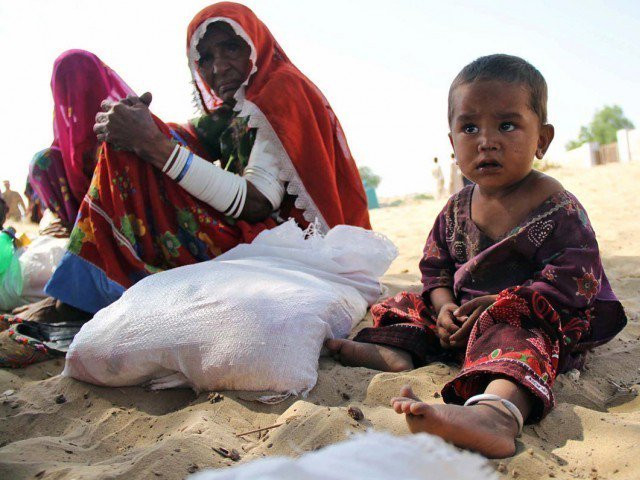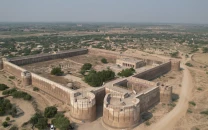Misdirected priorities: Undue expenditures overshadow Sindh’s public projects
Authorities have spent millions on operational, administrative expenses instead of serving the masses

PHOTO: FILE
Per sources, authorities have spent millions of rupees on operational and administrative expenses instead of spending the money to achieve the actual project goals.
Most of the operational expenditure comprises the salaries and perks of officers and other staffers associated with the projects. What’s more, there is no official limit on the amount of money that can be spent on the operational affairs of a specific public project. Therefore, officials have been openly taking advantage of the situation and lining their own pockets.
A recent report by the Auditor General of Pakistan has revealed that officials working for People’s Primary Healthcare Initiative (PPHI) spent over Rs436 million on salaries and other perks of staffers working for the Sindh government’s nutrition programme. This amount was spent on ‘non-nutritional’ expenses from March 2016 to June 2018.
The provincial health department started the Nutrition Support Programme under the PPHI Sindh in March 2016 with the aim of providing nutritional support to children across nine districts of the province, including Tharparkar, Badin, Umerkot, Sanghar, Tando Muhammad Khan, Qambar-Shahdadkot, Larkana, Jacobabad and Kashmore. Per the audit report, over Rs269 million were spent on staffers’ salaries alone, while Rs36 million were spent on rented vehicles and another Rs24 million on ‘transportation’.
“The management should have expended this heavy amount on nutrition which could have saved the lives of thousands of children who die every year due to malnutrition, especially in Thar,” the audit report remarked. The audit team also took up the issue with the authorities concerned in May 2018 but nothing was done about it.
The unduly huge expenditure carried out under the Nutrition Support Programme has adversely affected its impact in malnutrition-hit areas of the province. According to local journalist Khatau Jani, despite spending millions of rupees on reducing malnutrition in Tharparkar, the situation has worsened instead of improving.
“The ratio of malnutrition-related deaths among children in Tharparkar has alarmingly increased,” he claimed. “The mortality rate among children in the district was 336 in 2014, but instead of decreasing, the number increased to 832 children in 2019.”
It is pertinent to mention that Tharparkar has been the worst-affected district in the province when it comes to severe nutritional deficiency among children. Per reports, thousands of children in the district have succumbed to malnutrition. In a bid to tackle the situation amid vehement criticism, the Sindh government increased the number of doctors and health facilities in Tharparkar and also launched the Nutrition Support Programme, but the measures failed to make any difference.
Similarly, the status of 33 Basic Health Units (BHUs) in the district was upgraded to improve health facilities at the grassroots level but people reported that they witnessed no significant improvements because the government continued to hire more staffers and doctors instead of providing relief to the poor. Per the audit report, the government spent Rs180.96 million on salaries and allowances of doctors and other medical staff.
The main objective behind upgrading the BHUs was the provision of normal deliveries at each unit, however, the plan could not be achieved. Per the audit report, the performance of upgraded BHUs remained very poor and not a single normal delivery was performed in Hyderabad.
According to renowned economist Kaiser Bengali, who has also served as the advisor to the chief minister of Sindh for planning and development, the operational expenses of public projects can be reduced through proper planning.
“Public projects can be designed in a way that their overhead costs can be minimised,” he told The Express Tribune. “I had successfully designed the Benazir Bhutto Income Support Programme along the same lines while I was working with the Sindh government. The overhead cost of the programme was hardly one per cent, all because of proper planning,” he said.
He also said that if the government imposes a limit on the overhead expenses in public projects, things can be improved.
“The government should make rules in this regard and there should be a valid justification by officials concerned if any project’s overhead expenditure exceeds the set limit.”
Published in The Express Tribune, February 1st, 2020.



















COMMENTS
Comments are moderated and generally will be posted if they are on-topic and not abusive.
For more information, please see our Comments FAQ